How to Open a Restaurant in the USA
Step by step guide to opening a restaurant in the United states
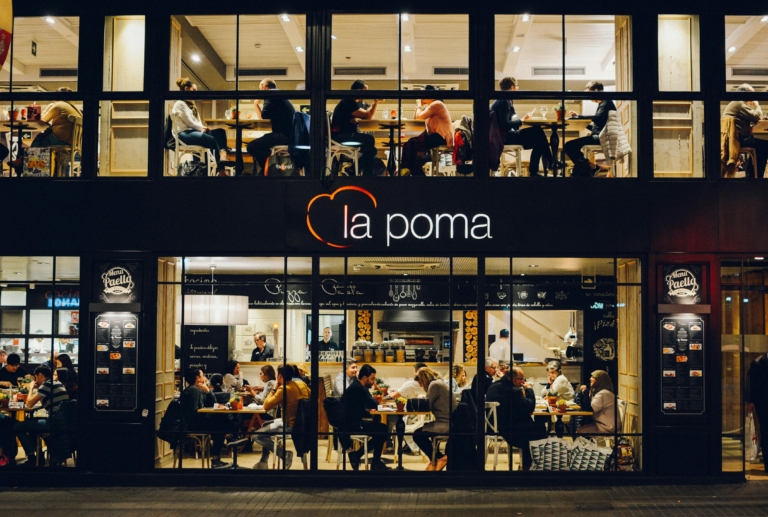
Opening a restaurant in the United States is an exciting venture that combines passion, creativity, and business acumen. However, it is also a complex process that requires careful planning, substantial resources, and adherence to legal and regulatory requirements. This guide will walk you through the steps to open a successful restaurant, from conceptualizing your idea to welcoming your first customers.
Develop a Concept and Business Plan
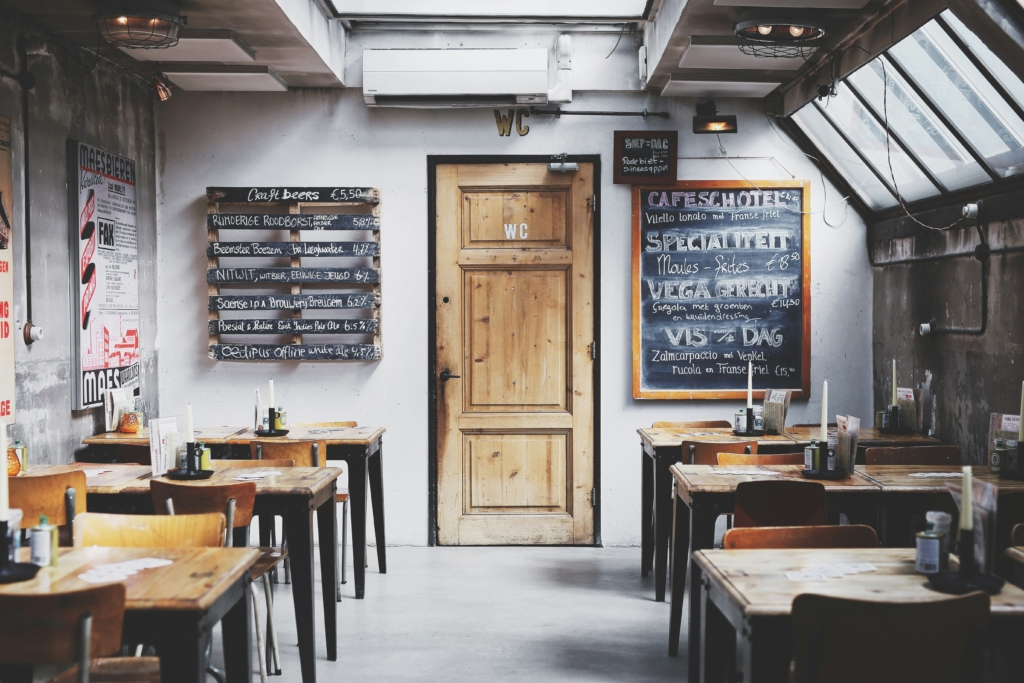
The foundation of any successful restaurant is a strong concept. Your concept should define the type of cuisine, target audience, ambiance, and price point.
Key Steps to Develop a Concept
Identify your niche
Determine whether your restaurant will specialize in a particular cuisine, such as Italian, Chinese, or Mediterranean. Alternatively, you might focus on a specific dining style, like fast-casual, family-friendly, or high-end gourmet. Consider catering to trending dietary preferences such as vegan, gluten-free, or keto-friendly options, or create a unique fusion menu that combines culinary traditions from multiple regions.
Research trends
Conduct in-depth market research using tools like surveys, focus groups, and online analytics to identify customer preferences, dining habits, and underserved niches in your area. Analyze current culinary trends, seasonal demands, and popular cuisines to align your concept with emerging opportunities.
Define your unique selling proposition (USP)
Determine what sets your restaurant apart by analyzing factors like innovative recipes, exclusive themes, unmatched customer service, or specialized dietary offerings that resonate with your target audience.
Create a Comprehensive Business Plan
Your business plan serves as a roadmap for your restaurant’s success. It should include:
Executive summary
Provide a concise overview of your restaurant’s concept, including the type of cuisine, target market, and overall vision. Highlight your primary objectives, such as creating a unique dining experience, achieving profitability within a specific timeframe, or establishing a strong community presence. Ensure this section captures the essence of your business to engage potential investors or stakeholders.
Market analysis:
Conduct a thorough evaluation of the local competition to understand their strengths, weaknesses, and market positioning. Analyze demographics to identify your target audience’s age, income level, and dining preferences. Additionally, assess the location for foot traffic, accessibility, parking availability, and proximity to complementary businesses such as theaters or shopping centers. Utilize tools like geographic information systems (GIS) and demographic reports to gather precise data for informed decision-making.
Operational plan
Operational plan: Provide a comprehensive outline of your restaurant’s staffing structure, including key roles such as chefs, servers, and managers, along with a strategy for hiring, training, and retention. Specify your suppliers, highlighting how you will source quality ingredients and maintain consistent delivery schedules. Detail daily operations, covering kitchen workflows, food preparation processes, inventory management, and customer service protocols to ensure seamless functioning and a positive guest experience.
Financial plan
Provide a detailed breakdown of your startup costs, including expenses for equipment, initial inventory, permits, marketing, and lease deposits. Develop a comprehensive revenue projection by estimating customer volume, average ticket size, and seasonal variations. Include a break-even analysis to calculate the point at which your revenue will cover your operating costs, offering insights into financial viability and timelines for achieving profitability.
Secure Financing

Starting a restaurant is capital-intensive. On average, it can cost between $275,000 and $800,000 to open a restaurant, depending on the size and location.
Options for Financing
- Personal savings: Ideal for small ventures or supplemental funding.
- Business loans: Approach banks or credit unions with a strong business plan.
- Investors: Seek out individuals or venture capitalists willing to invest in your concept.
- Crowdfunding: Use platforms like Kickstarter or GoFundMe to generate interest and funding.
Choose the Right Location

Location is critical to a restaurant’s success. A prime location can attract foot traffic, while a poor choice can hinder growth.
Factors to Consider
Demographics
Choose a location that aligns with your target audience’s characteristics, such as age, income level, lifestyle, and dining habits. Ensure the area has sufficient population density and demand to support your restaurant type, whether it caters to young professionals, families, or health-conscious consumers.
Visibility
Ensure your restaurant is easily visible and accessible by choosing a location with high foot traffic, prominent signage, and convenient access from main roads or public transportation. Consider features such as well-lit entrances and clear directions to attract customers.
Competitor analysis
Conduct a detailed study of nearby restaurants to identify their strengths, weaknesses, and market positioning. Avoid areas saturated with similar establishments offering comparable cuisines or dining experiences. Instead, aim for a location where your restaurant can fill a gap in the market or introduce a unique concept that differentiates it from existing options.
Lease terms
Negotiate favorable lease agreements by carefully reviewing rent rates, lease duration, renewal options, and flexibility in case of unforeseen circumstances. Ensure the lease includes terms for tenant improvements, clear maintenance responsibilities, and options to sublease or exit early if needed. Consider working with a real estate attorney to secure the best terms and protect your business interests.
Register Your Business and Obtain Permits
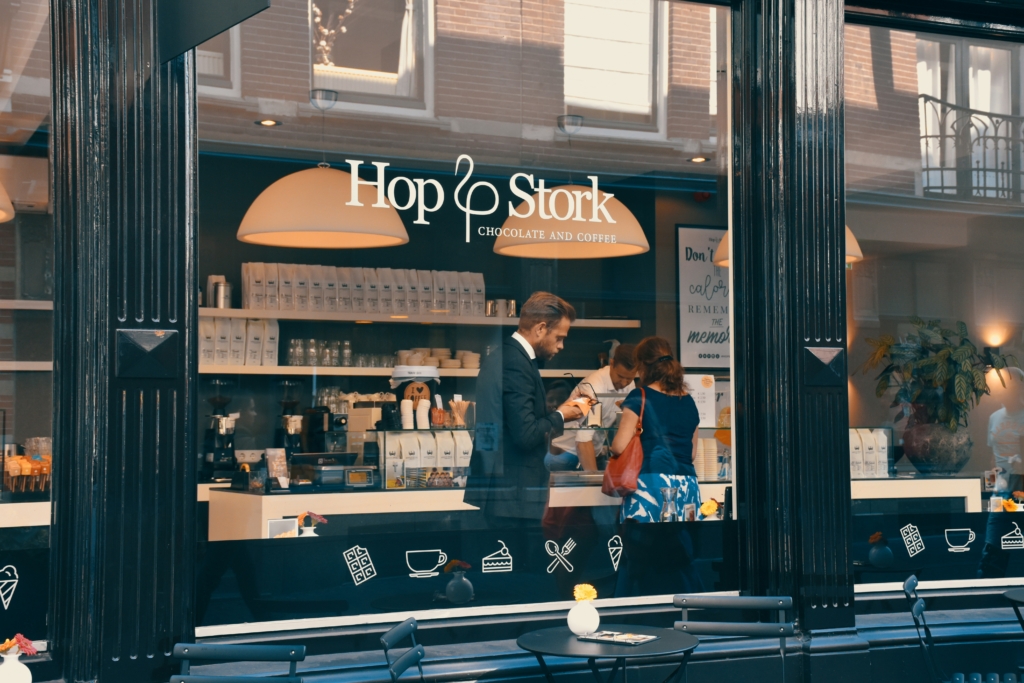
To operate legally, you need to register your business and secure the required permits and licenses.
Essential Steps
Choose a business structure:
Decide between a sole proprietorship, partnership, Limited Liability Company (LLC), or corporation based on your risk tolerance, tax preferences, and future growth plans. A sole proprietorship is straightforward but offers no personal liability protection. Partnerships are suitable for businesses with multiple owners but share liability among partners. An LLC provides flexibility and protects personal assets from business debts. A corporation, while more complex, can offer the best options for raising capital and long-term scalability. Consult with a legal or financial advisor to determine the best fit for your restaurant.
Register with federal and state authorities
Obtain an Employer Identification Number (EIN) from the IRS, which is essential for tax reporting, hiring employees, and opening a business bank account. Additionally, ensure you register your business name with the appropriate state agencies, and file for any required state-level identification numbers or tax permits, such as a state sales tax permit if your state imposes sales tax on food services.
Acquire local permits
Requirements vary by state, so it’s essential to understand the specific permits needed for your location. Common permits include a food service license, health permit, and liquor license if applicable. Additionally, a building permit may be necessary for renovations, and a fire safety inspection will ensure compliance with state fire codes. Many states require a signage permit for exterior displays and an outdoor seating permit for patio dining. Depending on state laws, you might need a grease trap permit (especially in states like California and New York), a wastewater discharge permit, and a music license for playing copyrighted music. States such as Texas and Florida may have specific rules for employee food handling certifications, while states like Oregon and Washington might have environmental health permits to regulate food waste and recycling practices. Always check with your state’s health department, liquor control board, and local municipal offices to confirm you meet all necessary regulations and obtain state-specific licenses.
Comply with zoning laws
Ensure your location adheres to local zoning regulations, which dictate how properties can be used in specific areas. Verify that your chosen site is zoned for restaurant operations, including factors such as parking requirements, building height limits, noise restrictions, and outdoor dining allowances. Some areas may have specific rules regarding waste disposal, ventilation, and business hours. Engage with local zoning boards or planning commissions to secure the necessary approvals and variances if needed, and avoid costly delays or potential fines by understanding these regulations thoroughly before signing a lease.
Design Your Space
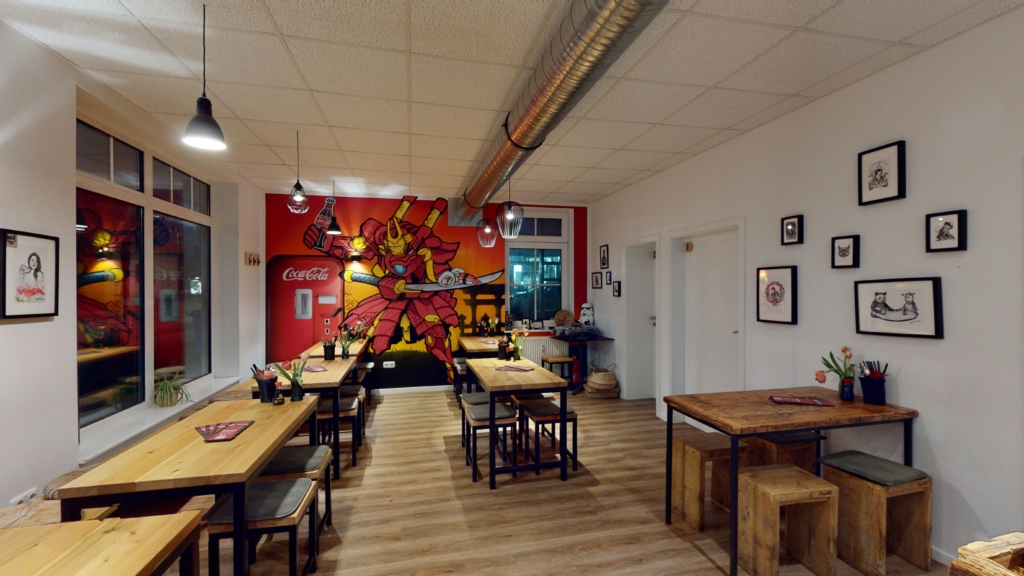
Your restaurant’s interior design should align with your concept and create a welcoming atmosphere.
Hire a professional
Collaborate with experienced architects or interior designers who specialize in restaurant layouts to maximize both aesthetics and functionality. A qualified professional can help you create a floor plan that optimizes seating capacity, ensures smooth traffic flow between the kitchen and dining areas, and meets health and safety regulations. They can also offer insights on acoustics, lighting design, and the strategic placement of service stations to enhance efficiency and customer experience. Additionally, they can guide you through the permitting process for construction and interior modifications.
Prioritize functionality
Design the kitchen to optimize workflow by placing prep stations, cooking equipment, and storage areas in a logical sequence to minimize movement and improve efficiency. Ensure the dining area layout allows for smooth traffic flow for both customers and staff, with adequate spacing between tables to enhance comfort and accessibility. Service areas should be strategically located to reduce wait times and support seamless interactions between servers and the kitchen. Consider investing in ergonomic furniture, efficient storage solutions, and modern kitchen equipment to streamline operations and reduce employee fatigue.
Focus on ambiance
Use lighting, colors, furniture, and decor to create a cohesive atmosphere that aligns with your restaurant’s concept and enhances the overall dining experience. Consider using warm, soft lighting for intimate settings, or bright, vibrant lighting for casual, family-friendly environments. Choose a color palette that complements your brand identity and influences the mood of the space—for instance, earthy tones for a rustic feel, or bold colors for a modern, energetic vibe. Select furniture that balances comfort, style, and durability. Incorporate elements like art, greenery, or music to create an immersive environment that engages all the senses and leaves a lasting impression on your guests.
Adhere to regulations
Follow all applicable building codes, including fire safety regulations, electrical standards, plumbing requirements, and structural guidelines. Ensure your restaurant complies with the Americans with Disabilities Act (ADA) by providing accessible entrances, restrooms, seating, and pathways for individuals with disabilities. Additionally, verify that your ventilation, lighting, and sanitation systems meet health and safety standards. Consult with local building inspectors and code enforcement officers to ensure full compliance and avoid costly violations or delays.
Build Your Menu
QR code restaurant menus
Beautiful, hygienic, contactless QR code menus for restaurants, bars and cafés.
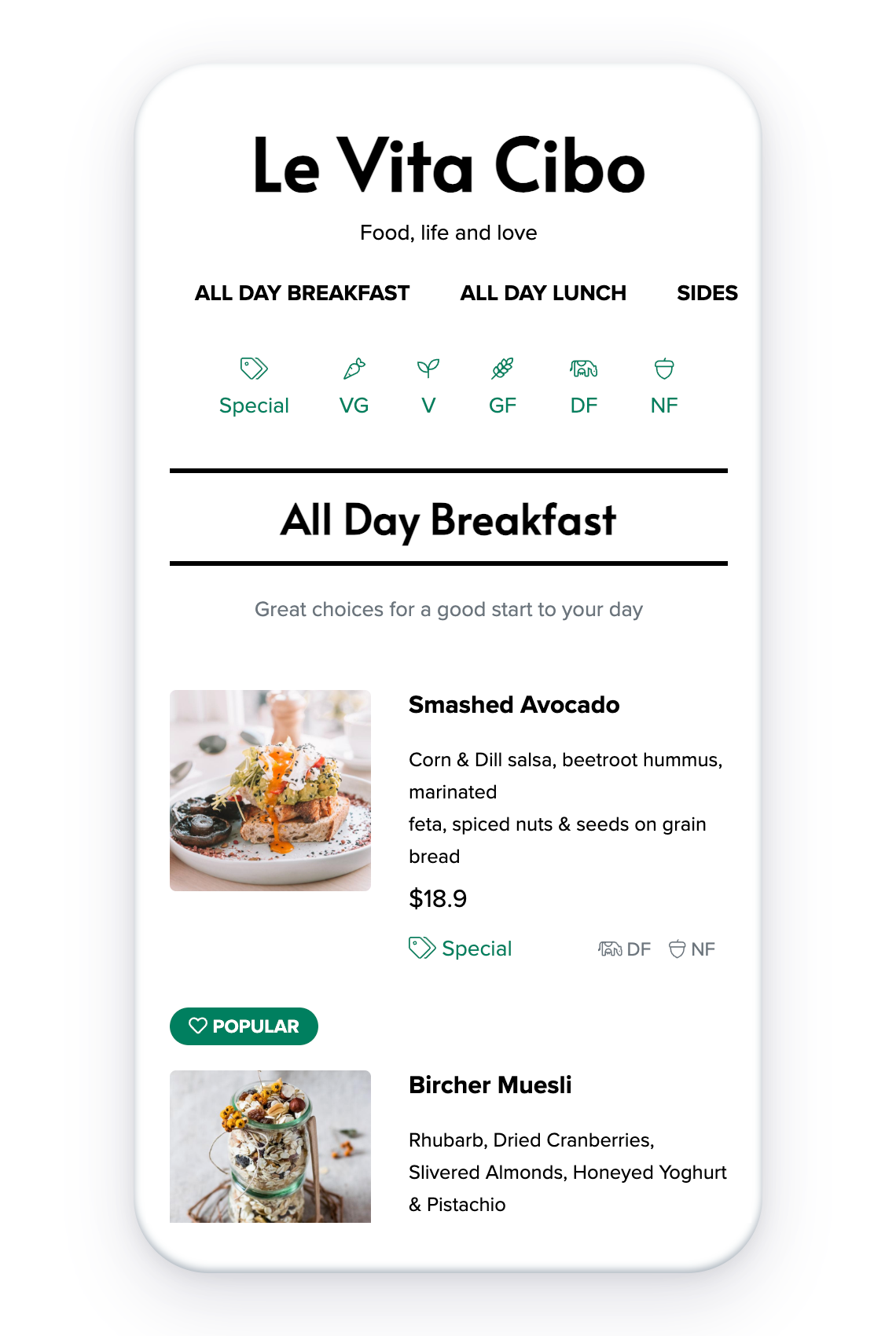
Your menu is the heart of your restaurant and should reflect your concept and target audience.
Tips for Menu Development:
- Conduct taste tests: Experiment with recipes to create standout dishes.
- Balance variety and focus: Offer diverse options without overwhelming customers.
- Set competitive pricing: Factor in ingredient costs, labor, and overhead to price dishes appropriately.
- Design an attractive menu: Use clear descriptions, appealing visuals, and a logical layout.
Hire and Train Staff
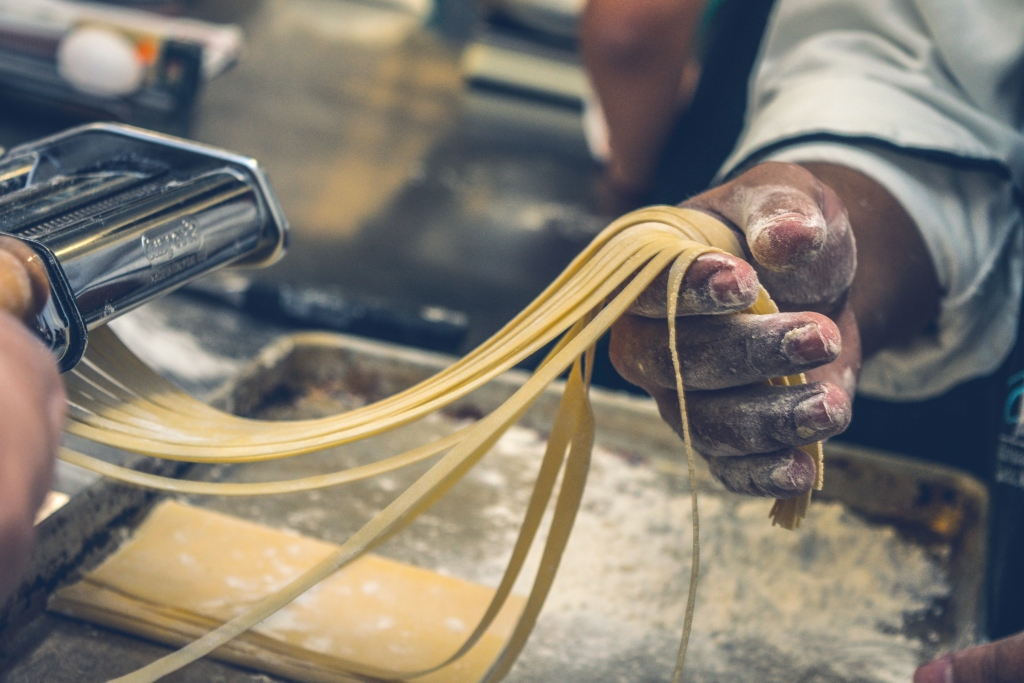
A skilled and motivated team is essential for providing excellent service and building customer loyalty.
Steps to Build Your Team
Define roles
Identify key positions such as chefs, sous chefs, line cooks, prep cooks, dishwashers, servers, hosts, bartenders, bussers, and managers. Outline specific responsibilities for each role to ensure clarity in duties and expectations. For example, chefs oversee the kitchen operations and menu execution, while line cooks handle specific stations during service. Managers are responsible for supervising staff, handling customer relations, and ensuring smooth daily operations. Consider creating detailed job descriptions and cross-training staff to improve flexibility and efficiency in your team.
Recruit effectively
Use a multi-channel approach by leveraging popular job boards like Indeed, Glassdoor, and LinkedIn to reach a broad audience. Utilize social media platforms such as Facebook, Instagram, and Twitter to post job openings and engage with potential candidates who are passionate about your restaurant’s concept. Join industry-specific networks and associations, such as the National Restaurant Association or local hospitality groups, to connect with experienced professionals. Consider employee referral programs to incentivize your current staff to recommend qualified candidates, and attend job fairs or culinary school events to scout new talent. Tailor your job postings to highlight your restaurant’s unique culture, growth opportunities, and benefits to attract the right team members.
Provide comprehensive training
Develop a structured training program that covers essential aspects of customer service, food safety, and operational procedures. For customer service, train staff on communication skills, handling customer complaints, upselling techniques, and creating a welcoming atmosphere. In food safety, ensure employees understand hygiene practices, safe food handling, allergen management, and compliance with health regulations. Operational procedures should include order-taking protocols, kitchen workflows, inventory management, point-of-sale system usage, and emergency procedures. Consider ongoing training sessions, refresher courses, and certifications to maintain high standards and keep your team updated on best practices.
Foster a positive culture
Encourage teamwork by promoting open communication, collaboration, and mutual respect among staff members. Implement recognition programs to celebrate achievements, such as “Employee of the Month” awards, performance bonuses, or public shout-outs for outstanding work. Support career growth by offering professional development opportunities, such as training workshops, mentorship programs, and pathways for advancement within the restaurant. Create a supportive environment where employees feel valued, motivated, and invested in the restaurant’s success, leading to higher job satisfaction and lower turnover rates.
Establish Vendor Relationships
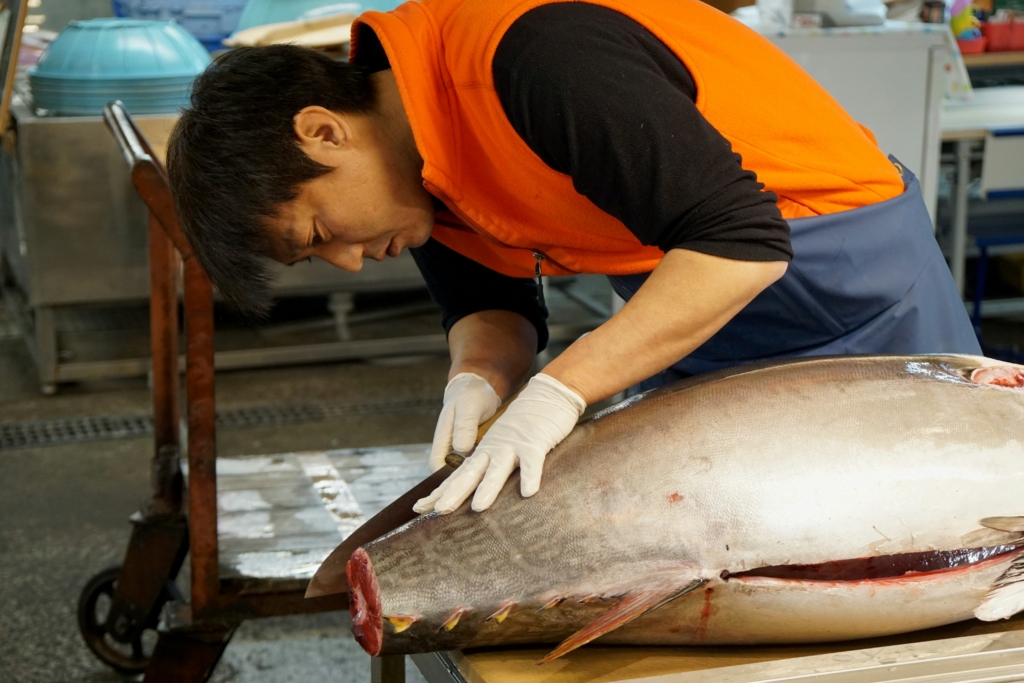
Reliable suppliers ensure you have consistent access to high-quality ingredients and equipment.
How to Choose Vendors
Research options
Compare local and national suppliers by evaluating factors such as product quality, reliability, pricing, delivery schedules, and customer service. Look for suppliers who can provide fresh, high-quality ingredients consistently and who have a good reputation in the industry. Consider conducting site visits or requesting sample products to assess quality firsthand. Additionally, check for suppliers who offer bulk discounts, flexible payment terms, and loyalty programs to help manage costs effectively. Establish relationships with both primary and backup suppliers to ensure uninterrupted service in case of delays or shortages.
Negotiate contracts
Secure favorable terms for long-term partnerships by carefully reviewing pricing structures, payment schedules, and delivery terms. Ensure contracts include clauses for consistent quality standards, timely delivery, and flexibility for changes in order volumes. Consider negotiating discounts for bulk purchases, loyalty incentives, or extended payment terms to improve cash flow. Include terms for dispute resolution, cancellation policies, and contingencies for supply chain disruptions to protect your business interests. Consult with a legal professional to ensure the contract safeguards your restaurant’s needs and minimizes potential risks.
Diversify suppliers
Avoid relying on a single vendor to reduce risks by establishing relationships with multiple suppliers for critical ingredients and supplies. This strategy ensures that if one supplier faces delays, shortages, or quality issues, you have alternatives to maintain a steady flow of inventory. Consider working with local, regional, and national suppliers to balance reliability, cost, and availability. Diversifying suppliers can also give you leverage in negotiations and provide access to a wider range of products, seasonal items, and specialty goods.
Develop a Marketing Strategy

Effective marketing builds your brand and attracts customers.
Marketing Tactics
Create a strong online presence
Build a professional website that includes essential information such as your restaurant’s menu, hours, location, reservation options, and contact details. Optimize the website for mobile devices to ensure accessibility for on-the-go users. Maintain active social media accounts on platforms like Instagram, Facebook, TikTok, and Twitter to showcase high-quality photos of your dishes, behind-the-scenes content, and customer reviews. Engage with your audience through regular posts, live videos, polls, and direct messaging to build a sense of community and encourage loyalty. Additionally, consider leveraging review sites like Yelp, TripAdvisor, and Google My Business to manage your reputation and attract new customers by responding promptly to feedback and reviews.
Leverage local advertising
Use a mix of traditional and modern approaches to maximize visibility. Distribute eye-catching flyers in high-traffic areas like shopping centers, gyms, and local businesses. Utilize radio spots on popular stations to reach a broader audience, especially during peak commuting hours. Participate in or sponsor community events, such as farmers’ markets, festivals, charity fundraisers, and school functions, to build relationships and boost brand awareness. Consider local newspaper ads, billboards, and partnerships with nearby businesses for cross-promotional opportunities. This multi-faceted approach helps you connect with the local community and attract potential customers.
Offer promotions
Attract new customers by implementing a variety of promotional strategies. For your grand opening, consider offering special discounts, free samples, or exclusive menu items to generate excitement and encourage visits. Develop loyalty programs such as punch cards, reward points, or digital apps that provide incentives for repeat customers, like discounts on future purchases or a free meal after a certain number of visits. Additionally, run limited-time offers, happy hour specials, or themed nights to keep customers engaged and returning. Collaborate with influencers, local media, and social media platforms to promote these deals and amplify your reach.
Partner with food delivery platforms
Increase accessibility and boost revenue by joining popular apps like Uber Eats, DoorDash, Grubhub, and Postmates. These platforms expand your reach beyond in-house dining, allowing you to serve customers who prefer delivery or takeout. Ensure your menu is optimized for delivery by offering dishes that travel well and maintain quality. Create eye-catching photos and detailed descriptions to attract online orders. Monitor platform analytics to identify best-selling items and peak ordering times. Additionally, consider offering exclusive deals or discounts through these apps to encourage repeat business and enhance customer loyalty.
Plan Your Grand Opening
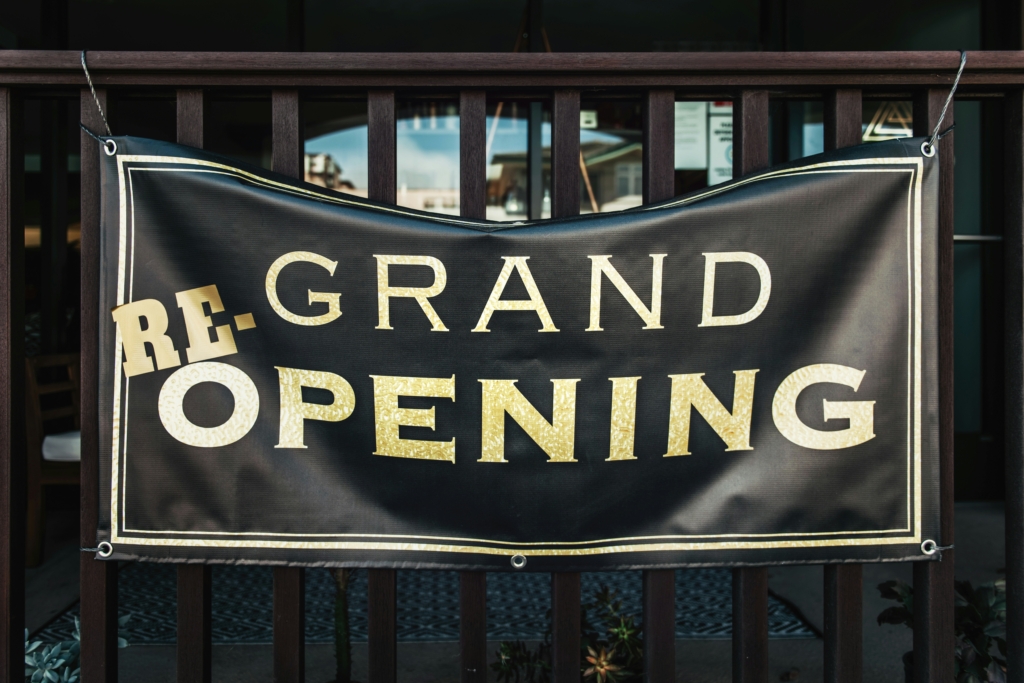
Your grand opening sets the tone for your restaurant’s reputation and future success.
Steps to a Successful Launch
- Host a soft opening: Invite a small group to preview your menu and provide feedback.
- Promote the event: Use social media, local press, and word-of-mouth.
- Offer incentives: Provide discounts or freebies to attract attendees.
- Gather feedback: Use customer input to refine your operations.
Maintain Compliance and Adapt

Operating a restaurant is an ongoing effort that requires continuous improvement and adherence to regulations.
Focus Areas
- Regular inspections: Ensure compliance with health and safety standards.
- Stay updated: Monitor industry trends and customer preferences.
- Adapt and innovate: Refresh your menu, update decor, or host special events to keep customers engaged.
Conclusion
Opening a restaurant in the USA is a rewarding endeavor that requires meticulous planning, dedication, and adaptability. By following these steps, you can turn your vision into a thriving business. Remember, success in the restaurant industry is built on a foundation of quality food, exceptional service, and a genuine connection with your community.

Natalie is a seasoned restaurant industry expert with over 10 years of experience in hospitality consulting. Having worked in roles ranging from manager to consultant, Natalie has a deep understanding of the challenges and rewards of running a successful restaurant.
Replace your restaurant website
Don't waste money on a website. People visit restaurant websites to see the menu, opening hours and location details. Your QR code menu has all those covered so you don't need a separate website. Here is what is included for free.
Start your free contactless QR menu trial, instant activation, pay nothing, cancel anytime
QR code menu FAQ
What is a QR code?
QR Code is short for Quick Response Code. A QR code (sometimes referred to as a 2D barcode) is similar to the barcodes you find on the products that you scan at checkout at your local supermarket. The biggest difference, besides how it looks, is that QR codes can store more information. Barcodes store basic product information like type, weight, and color. QR codes can store the same information as barcodes, and more. They can contain text, website links, geographic coordinates, and even images. QR codes, can be scanned by anyone using a phone.
What is a QR code restaurant menu?
A QR restaurant menu is a website that contains a menu for a restaurant. It is an online menu that can be accessed just like any other website. The QR part of it comes from the fact that people usually access it by scanning a QR code at the restaurant they are eating at. QR codes add convenience; instead of typing the website address of the menu, you just scan the code with your phone camera, and the menu opens up automatically.
Why does my restaurant need a QR code menu?
Just a few reasons your restaurant needs a QR menu are: hygiene, saving on printing costs, instant updates, customer experience, customer feedback, promotions, increased sales, increased table turnover, saving on staffing costs, customer data for marketing, and so on. If your restaurant does not have a QR code menu, you are leaving a lot on the table.
How to make a QR code menu?
Creating a QR code menu is easy and just takes a few minutes.
- Sign up for a Happy Menu free trial.
- Add your menu categories like “breakfast, lunch, drinks etc”.
- Add your menu items including their details like prices and descriptions, to the categories you have just created.
- Download the QR code we have created for you, print it, and put it on your tables or anywhere else you want your customers to access it.
QR code menu price?
We know our customers are small, independent businesses, so we try to keep our monthly fee as low as possible. We charge a very cost-effective $27 a month for QR restaurant menus. If you choose to turn on ordering, credit card processing fees and application fees are applied to orders. We use Stripe for processing payments. We chose Stripe because they give us the tools to build cutting-edge applications, and their pricing for credit card processing is competitive for our customer base. Compare their pricing to what your POS provider charges for online payments. Please refer to their fees here.
QR code menu example
We have created a qr code menu example. Click here to see it and play around with it. Sign up for a free trial if you would like to create your own QR menu and customize it the way you want.
How do QR code menus work?
QR code menus are online menus that are accessed when a QR code is scanned. Customers use their mobile phone to scan a QR code that is usually located on a restaurant table. When the QR code is scanned, the restaurant’s online menu appears on the customers phone.
How do you scan qr code menu?
QR code menu’s are easy to scan and only take a couple of seconds to open.
- Open your camera application on your phone.
- Point the camera at the QR code and the camera will automatically scan the code.
- Click the notification that appears to confirm you want to open the menu.
What types of QR code menus are available?
There are two types of PDF menus available. There is a PDF QR code menu, which is offered by some of our competitors, and an interactive QR code menu, which is what we offer. Both kinds of menus are accessed by scanning a QR code, but PDF QR code menus just show a PDF of a menu, and interactive QR code menus (the type Happy Menu provides) show an interactive menu website with all the advantages and benefits of an online menu. PDF QR code menus cannot be edited, have no interaction, no navigation, no filtering, etc. PDF QR code restaurant menus do not take advantage of most of the benefits that having an online menu provides.
Does my restaurant have to use table ordering?
No, you do not have to use the table-ordering feature. Some restaurants choose to use our QR menu for browsing only; their staff still come to the tables, take the orders, and run them through their POS system. If you do not wish to use table ordering, do not turn the feature on.
Which is best QR code menu generator?
Happy Menu is the number one restaurant QR code menu generator. Sign up for a free trial and you will be able to see why we are the best QR menu generator out there.
Do QR code menus increase order value?
According to a 2022 Deloitte Study, consumers spend an around 20% more when they order via QR code menus or online menus.
Do my customers have to install an app?
Happy Menu QR code menu’s are 100% web based. All your customers need is a phone, no special software to access your Qr code menu.
Can i still see my menu online without scanning the code?
Yes, your QR menu is a website with it’s own web address. You can link to it from your website, facebook, linktree etc.
QR code menus
Beautiful digital menus for small restaurants bars and cafes
Per month
Free 14 day trial
